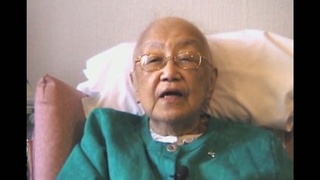Interviews
Checking in with Immigration once a month
When we came out of camp, we had to check in (immigration) every month. Every month, take a day off, my sister took a day off work, Sumi, took Jimmy, George and myself there. Of course, we never drove there, we took a bus, it felt like forever to get there. So the whole day is spent there. You go there, you wait, there's hundreds of people. Several hours later, you get in, you register and you go back home.
Another side thing is our family has motion sickness, so even taking the bus, we get motion sickness, we're that sensitive. It's our eye-ear, all that. So we had to get off several blocks before we got home to walk home. But those days were just grueling because... you know.
Date: September 20, 2019
Location: California, US
Interviewer: Tom Ikeda and Yoko Nishimura
Contributed by: Watase Media Arts Center, Japanese American National Museum and Denshō: The Japanese American Legacy Project.













